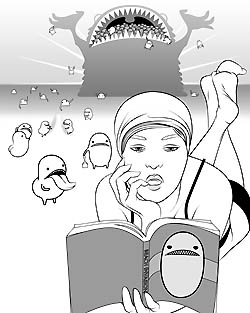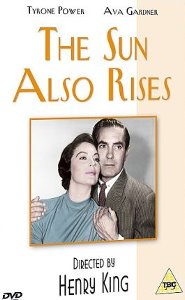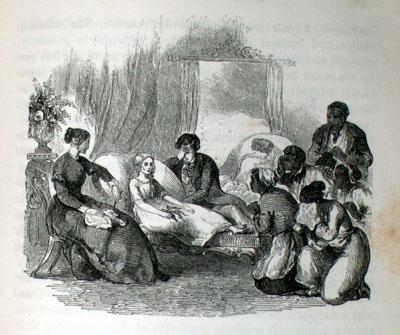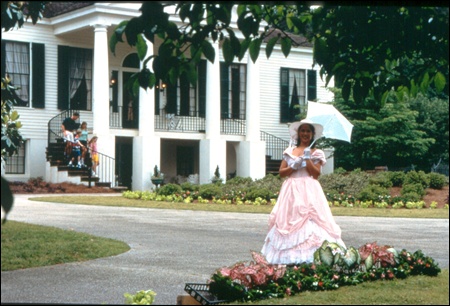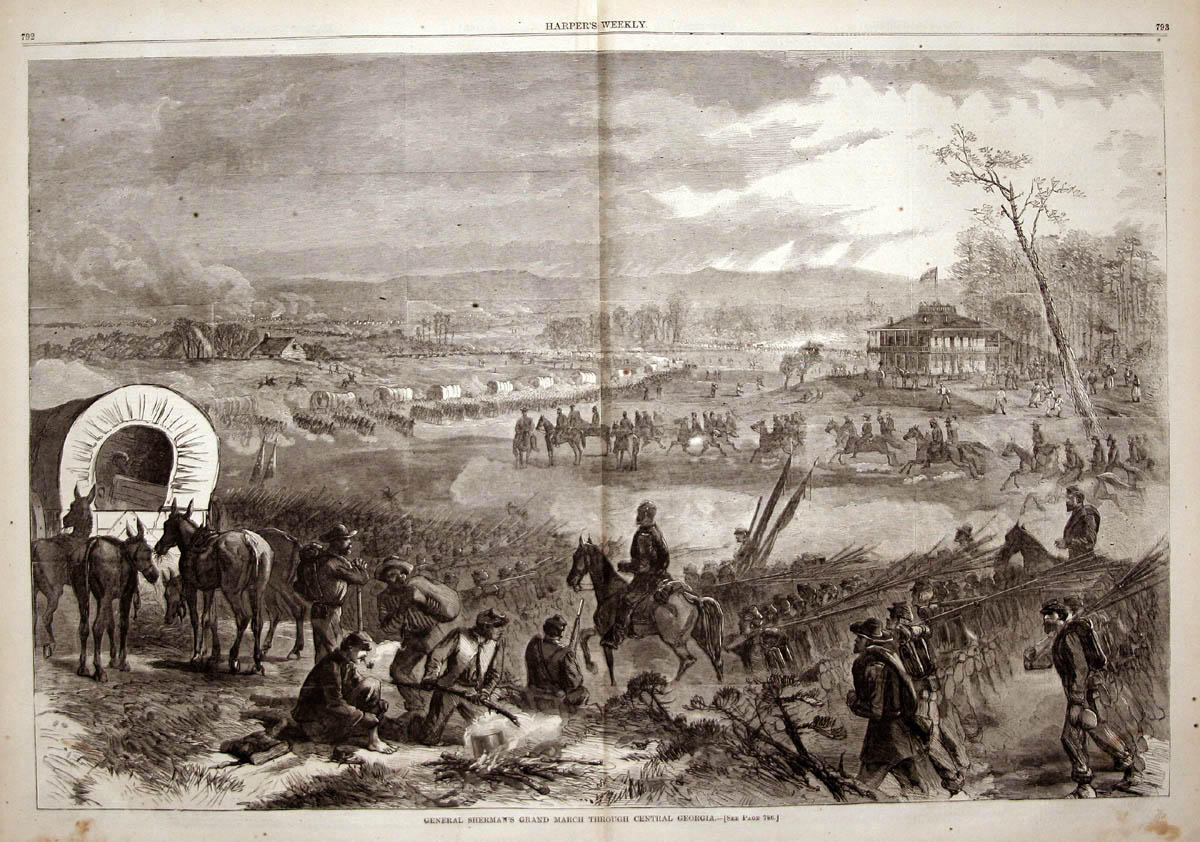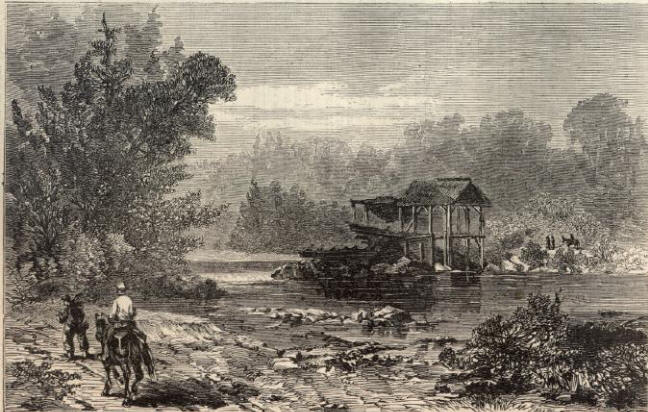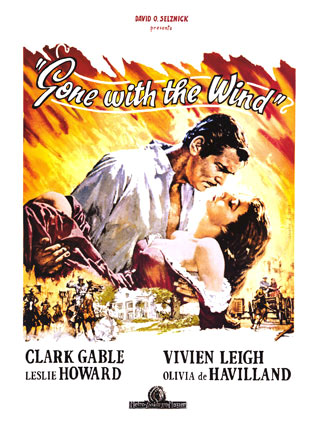|
Irvine Valley College: Online Literature Study of the School of Humanities and Languages Literature 110 - Popular Literature Spring 2013 - Ticket #62740 // Marjorie Coverley Luesebrink, MFA, Instructor
Gone With the Wind, Margaret Mitchell again, a Chapter-by-Chapter outline - here is is! Spark Notes on *Gone With the Wind.*
Unit 5c : The Lure of Romance (continued) Third, the story was clear about what was to blame: FATE had determined that they would not be together. [This act of fate might be war, strife between clans or countries, class differences (mistaken), or duty that calls.] Ah, the role of fate! At some point in the progress of *GWW* we might imagine that the Civil War will last at least until the end of the book - and that would give us an opportunity to feel that it was Fate in the form of War that might keep our lovers apart. But Mitchell will have none of that! The war ends, and Rhett keeps on making a fast buck and actually profits a good deal from the re-organization of the government afterwards (that is, the takeover by the Northern Yankees). And now, our lovers actually get together and have a lovely house in Atlanta and a child and every sign of the Good Life. But, alas, it is not Fate that drives them apart; it is the fact that neither one of them can get beyond stubborn pride and really connect honestly with the other!
Trench warfare in the US Civil War In typical war/love novels, such as Hemingway's "The Sun Also Rises," we do have the War as the elements that keeps the lovers apart - so Mitchell's book does upset the genre expectations in a couple of ways!
Movie Poster from *The Sun Also Rises* - 1957
Finally, the lovers needed to be lovers for life and eternity. In typical old country/European romances, the bonds of love were not severed by death - we had the feeling that this love was timeless and ageless and would endure forever in the great beyond. On the other hand, rather than thinking that our lovers, Scarlett and Rhett live in a universe where there is a "great beyond" and in that place they will be together forever - we see our characters as entirely earth-bound and mortal. They may be together in heaven - but we think they had better get it together on earth, first, if it's going to happen! And so, probably the four most-observed conventions of the European Great Romance are upended by Mitchell in *GWW.* If we ask why, we might come up with several answers - but any one of them needs to account for the audience response in the US to this book! *Gone With the Wind* was an immediate best seller right after it came out. It was shortly made into a wildly popular movie. (from Wiki pedia - by the way, the entire article here is wonderful) The novel won the 1937 Pulitzer Prize and was adapted into an Academy Award-winning 1939 film of the same name. It was also adapted during the 1970s into a stage musical titled Scarlett; there is also a 2008 new musical stage adaptation in London's West End titled Gone With The Wind. It is the only novel by Mitchell published during her lifetime, and it took her ten years to write it. The novel is one of the most popular books of all time, selling more than 30 million copies.
What we might deduce, then, from the reaction of American audiences to this romance, so unconventional with respect to the older, European tradition, is that Mitchell seems to have created a new Sub-Genre of Romance, the American Romance Genre, which has dominated our US genre stories ever since (but not necessarily the romances of other cultures).
Graphic poster for Indian Cinema - a good example of the "happy-happy" endings for Romance
Reassuring Plot It's a bit of a stretch to label *GWind* a "reassuring" plot - but there are certainly many elements of this plot that seem familiar to us simply because the book has become a part of our shared cultural inheritance. For the early readers of Mitchell's book in the 1930's and 1940's, though, the elements of the plot that would seem familiar and predictable would mainly come from the setting, the historical surround, and the characters.
Sketch from *Uncle Tom's Cabin* - "Farewell to the Slaves* It is hard to tell, really, what the Antebellum South [see Wikipedia article on Antebellum if this term is unfamiliar to you] was really like. We have accounts, but we can't really go back there and see what was going on with contemporary eyes. Even Mitchell's initial audience was nearly 100 years away from the "South" that she portrayed. But it is clear that Mitchell's "South" was very much like the "imaginary" South that loyal Southerners liked to evoke. The routines and social organization of *GWind* - in the early chapters especially - tends to signal to the reader that this is a world of pattern and respectable structure.
Tourist site for Antebellum Atlanta The historical surround also adds a great deal of plot stability. Since the War Between the States is generally well known - the optimistic beginnings, the subsequent disasters for the South, and, finally, the devastation of Sherman's March through Georgia - the reader knows that whatever happens to the domestic plot and the private lives of these characters, they will be greatly impacted by the events of the war that will rage around them for most of the book!
You are viewing a stunning drawing entitled "General Sherman's Grand March Through Central Georgia". The picture shows a long column of soldiers marching through a plantation in Georgia. Homes can be seen burning in the distance. The foreground shows soldiers around a campground. There is a fine site online that gives the newspaper accounts of Sherman's March Through Georgia and many more actual renditions of the time. Isn't it incredible to think that the Civil War Armies traveled in Covered Wagons?
and now on to: Clear-cut Value System Continue to next page - to Unit 5d
Romance: A very interesting site about contemporary romance fiction (note especially the sub-genres of this for publishing purposes): http://www.writing-world.com/romance/romgenres.shtml Popular romance writers are legion, so I chose only one site of a popular romance fiction author - but all you need to do to find out more about your favorite is to enter the name into Google Search. But maybe some of you have read: Nora Roberts - http://www.noraroberts.com/ Surprisingly enough, one of the best selling romance writers of today is actually a man, Nicholas Sparks, and we see his books on shelves and towels everywhere: http://www.nicholassparks.com/TheNovels.html
Marjorie Coverley Luesebrink: write to me with questions!
Marjorie Coverley Luesebrink, MFA, your Instructor, is a Professor of English in the School of Humanities and Languages, Irvine Valley College, Irvine, California. See Online writing at Home Page. |
| MENUBAR: About Your Class // Class Syllabus // Lecture Notes // Reading List // Recommended Reading // Assignments // Grading Policies // Contact Your Instructor // Announcements // Discussion |
